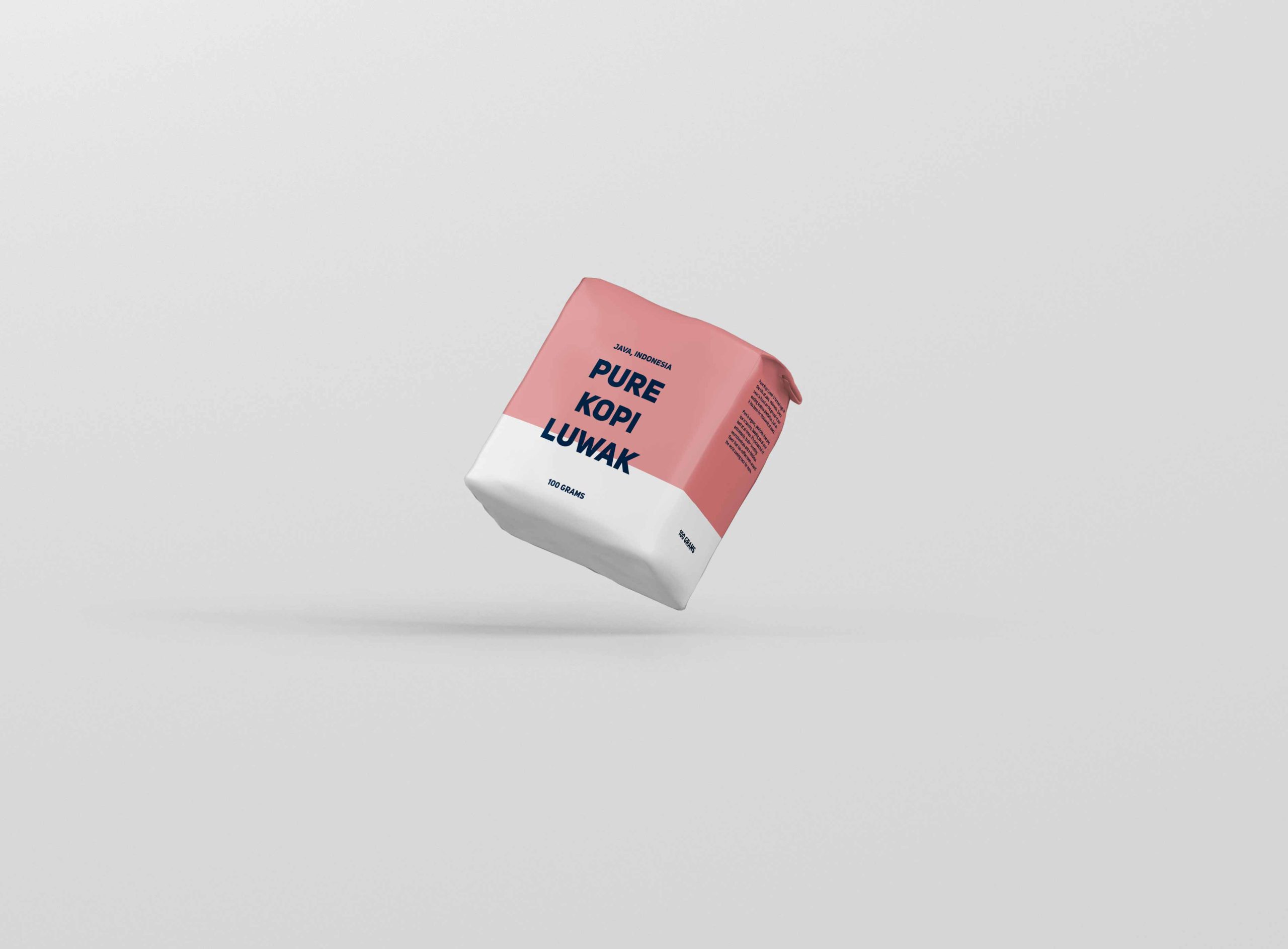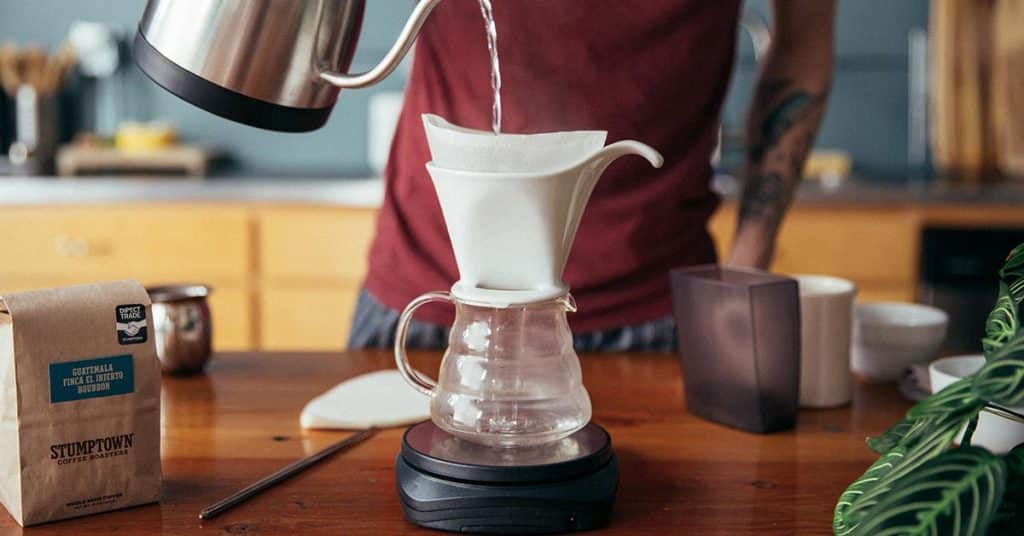In the past decade, pour over coffee has seen a resurgence of interest from around the world. It’s gained a cult-like following scattered around North America, Europe and beyond, and for good reason: pour over makes a seriously good cup of coffee. When you’re brewing beans as exclusive as kopi luwak, you want to use the best brewing method available.
Of course, pour over only makes a great cup if you know how to do it properly, which is what we’ll look at here. When you combine the incredible kopi luwak beans with the pour over method of brewing your coffee, the results can be truly outstanding.
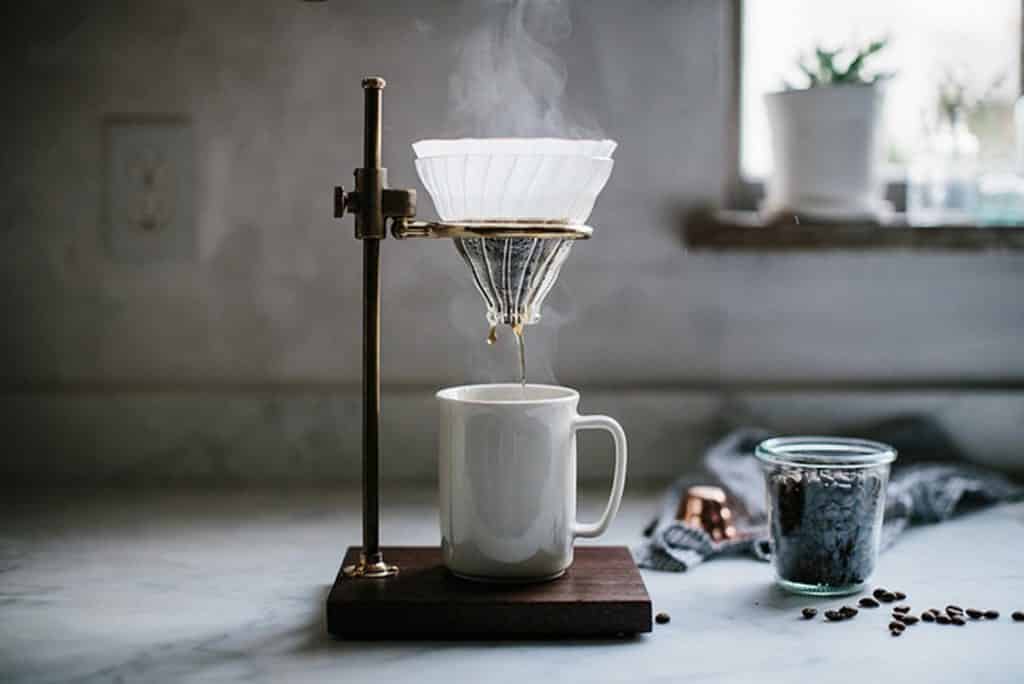
What Is Pour Over Coffee?
Pour over coffee is a simple, elegant method of brewing coffee that generally yields a superior taste relative to other brewing methods. As we show in our how-to recipe below, the key to making excellent pour over coffee lies in the pour itself. Once you get the hang of it, you’ll be making a delicious cup every time, though don’t be surprised if your first few tries come out subpar. As with any craft, the art of making world-class pour over coffee takes time to learn.
The History Of Pour Over Coffee
Pour over coffee was born in 1908 when Amalie Auguste Melitta Bentz, a German housewife, was so unsatisfied with how bitter the coffee her percolator was making that she decided to take things into her own hands. Bentz experimented with a number of different brewing methods, ultimately settling on the blotting paper from her son’s school book as the best way of eliminating that extreme bitterness. Bentz put her coffee grounds on the blotting paper and poured the water on top, inventing the world’s first coffee filter. Even better: her coffee now had a rich, full flavor with none of the bitterness of before.
Over the years, that filter has developed from the sheet of paper Bentz discovered to the cone-shaped filters we use today. The pouring method has changed too, from something haphazard to something meticulous and defined. Yet the overall sentiment is the exact same: nearly all of the coffee we drink today uses a filter, an innovation we owe wholly to Bentz.
In the 1930s, pour over coffee made its way to Japan, where it was met with serious appreciation and is still used widely in coffeehouses today (as The New York Times says, “Coffee is as Japanese as baseball and beer.”) It saw a lull throughout the latter half of the 20th century, but now pour over is back in a big way. From San Francisco to Hong Kong, the best coffeehouses in the world are doing the pour over with great enthusiasm.
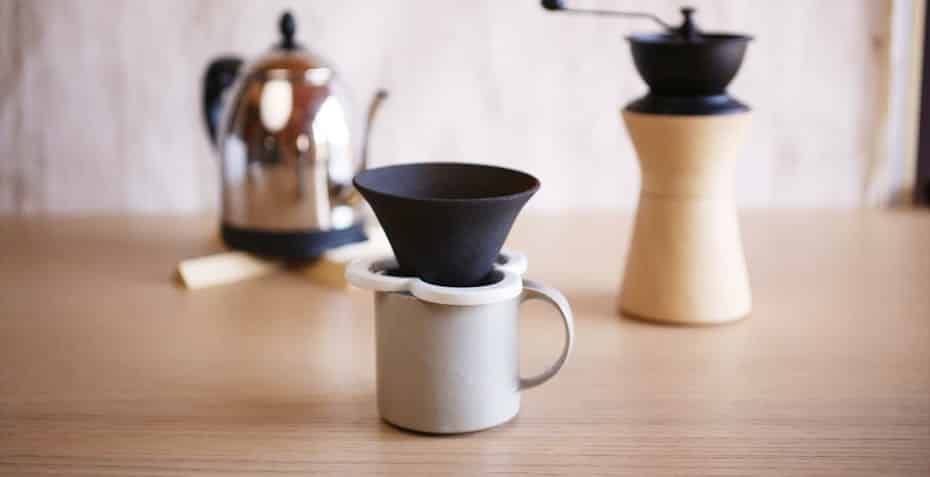
Pour over coffee is taken seriously in Japan
How Does Pour Over Coffee Taste?
Pour over coffee has a distinct taste relative to coffee made by other brewing methods. It’s complex, a much richer, fuller flavor than what you get from traditional drip coffee or even a French press. “The coffee it makes is so clean, so round and fruity, that you can fully taste all those complex layers of flavor that are supposed to be lurking in the best single-origin and micro-lot beans,” says coffee aficionado Oliver Strand of The New York Times.
Pour over kopi luwak sees an even larger taste difference than regular coffee, since kopi luwak beans are so delicate and unique. The slow, spiralling pour of the pour over is what brings out the rich flavors in the beans, especially with premium beans like kopi luwak. Most people agree that pour over coffee tastes better than drip coffee, and many prefer it to other methods like AeroPress coffee or even cold press coffee. Expect a full, fresh taste with every cup of pour over you make.
Benefits Of Pour Over Coffee
Making Pour Over Coffee Is Easy
Brewing your kopi luwak coffee via pour over uses just a few essential tools, doesn’t clutter your counter, and doesn’t require a power source (assuming your beans are already ground). If you’re on the road, camping or somewhere else that doesn’t have power, you’ll be glad you’ve been practicing your pour over at home!
Making Pour Over Coffee Is Elegant
As you learn the ins and outs of the pour over, you’ll start to notice how even the tiniest actions you take lead to a different tasting cup of kopi luwak. For example, pouring the water over the grounds in a spiral leads to a much different cup than simply pouring it normally. The recipe and process we’ve recommended above is what we’ve found works best for most people, though it certainly isn’t for everyone, so you’re encouraged to experiment with the grind size, water temperature, brewing time and everything else to see what you like best. If you make a great cup of pour over, you have yourself to thank; if you don’t, then you’re on the line, too. Have some fun and play with each part of the process until you find the perfect combination for you, connecting with your coffee along the way.
How To Make Pour Over Coffee
What You’ll Need
Makes 1 cup
Ingredients
2.5 tablespoons (25 grams) whole roasted kopi luwak coffee beans
Water
Equipment
Electric scale
Coffee grinder
Kettle
A single-cup drip coffee cone
A single-cup paper coffee filter
A coffee cup
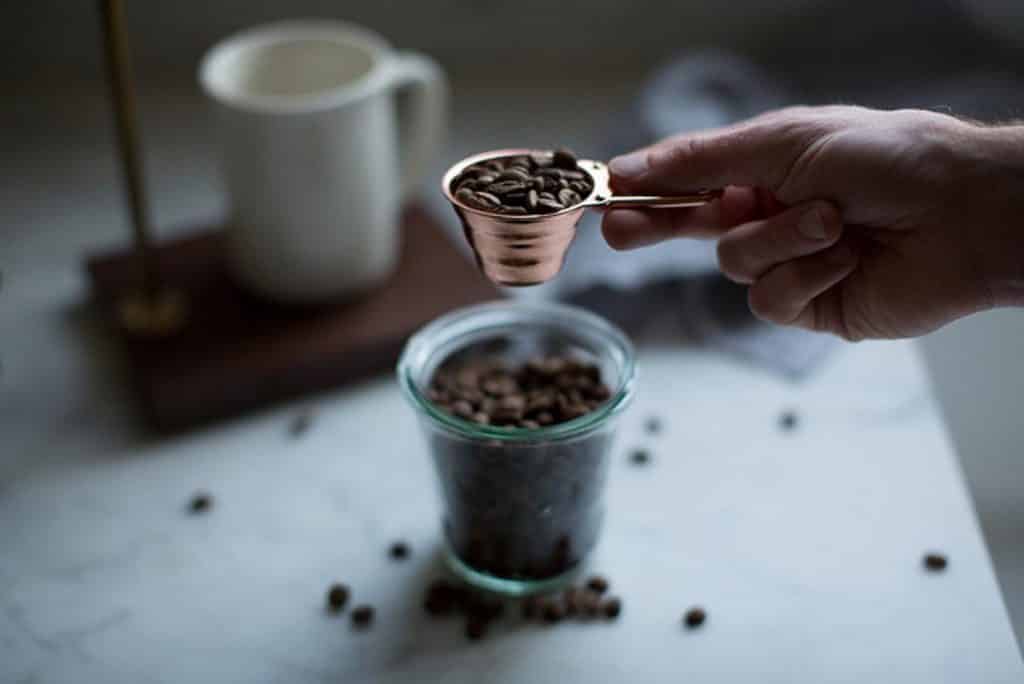
Instructions
Step 1: Boil the water.
For a perfect pour over, you’ll want to do your bloom pour (see step 5) when the water is about 205°F (96°C), or about thirty seconds after it boils.
Pro Tip: Boil double the amount of water you think you’ll need, pouring that extra water into your mug to warm it up. Kopi luwak, like all coffee, tastes better in a warmed mug than a cold one.
Step 2: Grind your kopi luwak beans.
Grind 2.5 tablespoons (25 grams) of whole roasted kopi luwak coffee beans to a consistency that resembles sea salt. You want to grind your kopi luwak coffee beans just before you use them, since coffee beans begin to oxidize and age faster as soon as you grind them.
Pro Tip: If you can’t tell the size of your grounds after you’ve ground them, putting them on a piece of white paper makes it much, much easier.
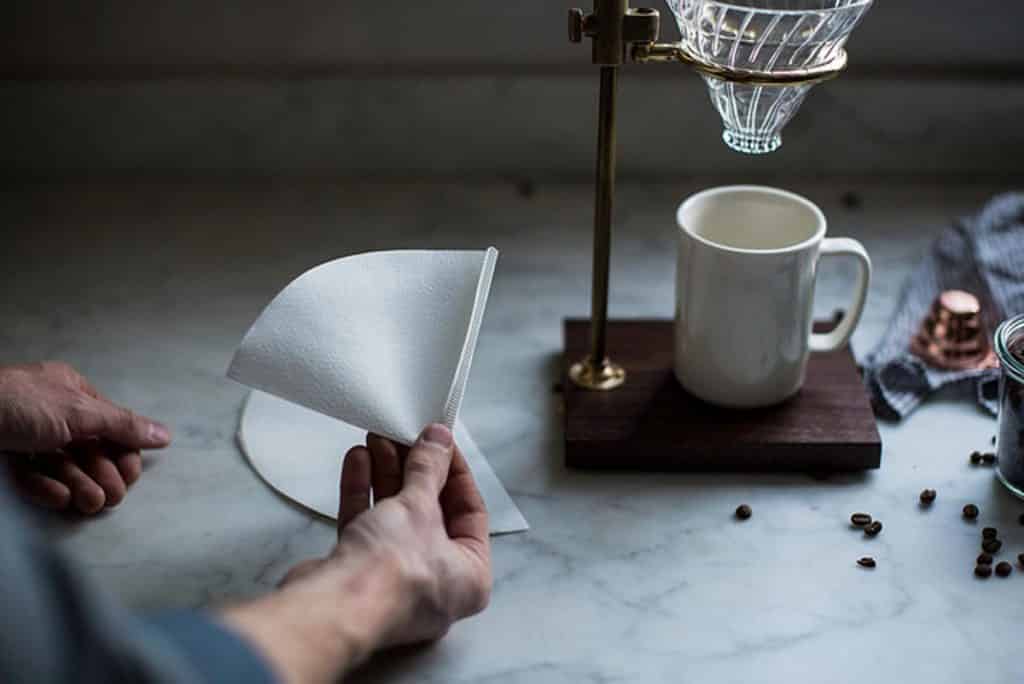
Step 3: Set the filter.
Set the filter inside the cone and wet it with hot water. This eliminates any papery/woody taste that might’ve made it into your coffee, and helps keep the filter in place when you’re actually using it. An added bonus is that this warms up your brewer, which will help keep your brewing temperature stable later. Dump this water out.
If you prefer, rather than using disposable paper filters, you can also use a reusable drip coffee cone, which has a filter made of stainless steel and doesn’t require paper filters at all.
Step 4: Add the grounds.
Add your kopi luwak grounds to the filter and place everything on the digital scale. Level out the grounds so they’re reasonably flat, and then set the scale to zero. We’re ready to get started!
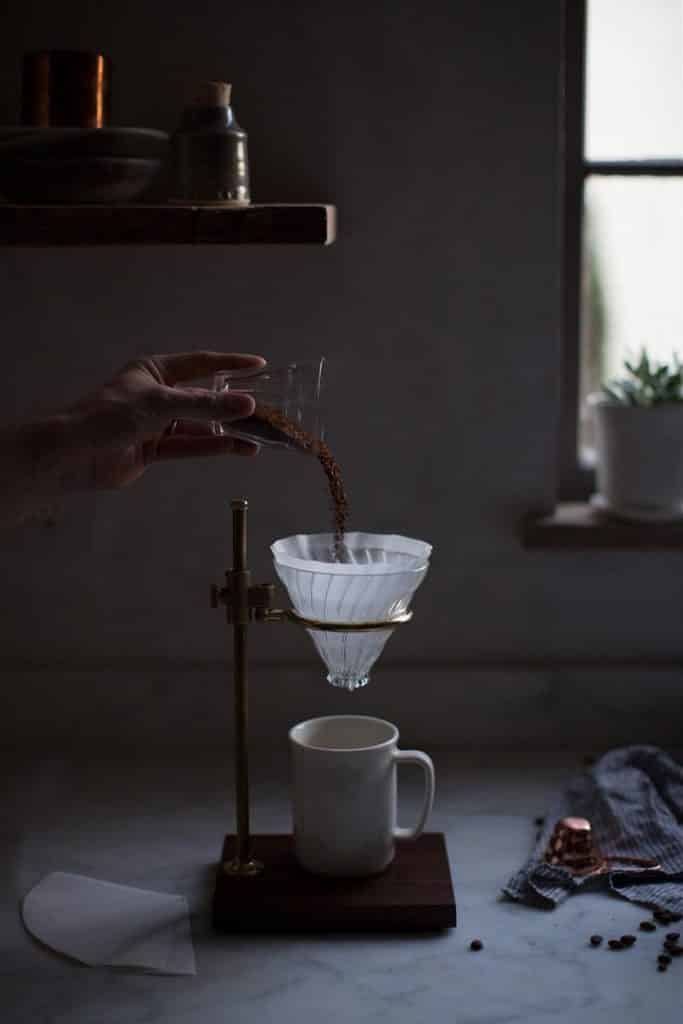
Step 5: The bloom pour
The first pour of a pour over is called “blooming” because the grounds let out a lot of gas during this initial contact with water. You’ll notice that the grounds rise up in the filter during the bloom pour, which is that de-gassing process at work.
Your bloom pour should be 60 grams of water poured in a slow spiral (about 30 seconds), starting from the outside of the filter toward the inside, to ensure the grounds become evenly saturated; the spiral motion also encourages flavor extraction later. Once you’ve reached 60 grams of water, let things sit for 60 seconds to ensure all of the gas has been released. This will give your kopi luwak a much nicer taste.
Pro Tip: If you aren’t already using a gooseneck kettle, we highly recommend getting one for your kopi luwak pour over. The long, slender spout of a gooseneck kettle gives you more control and precision in your pour, which has a big impact on the final taste of your coffee.
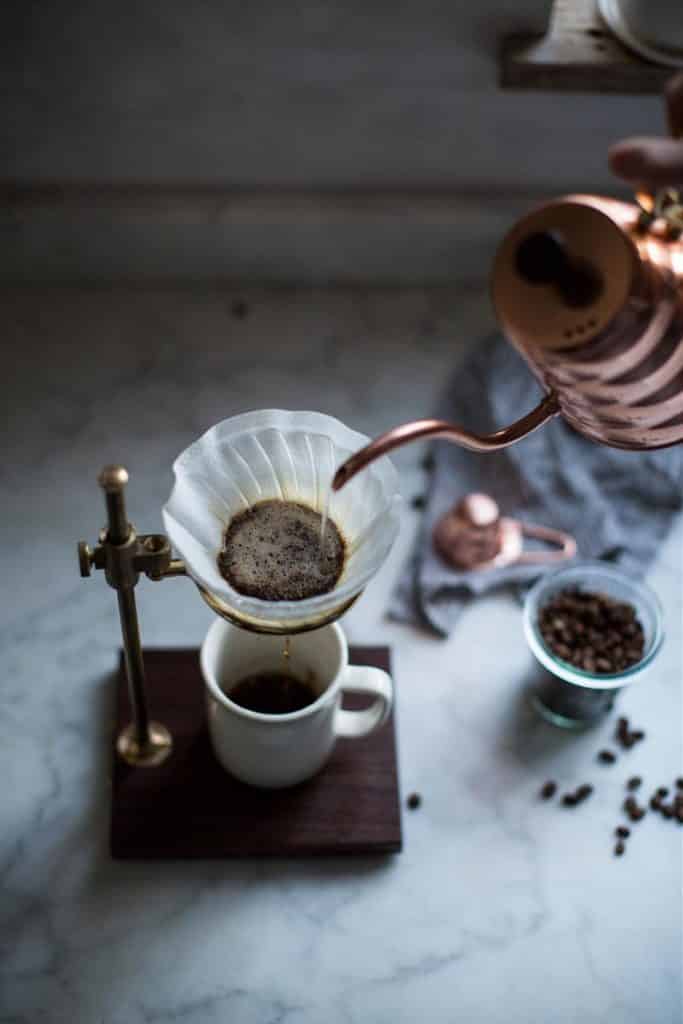
Step 6: Pour #2.
During Pour #2, you also pour in a spiral motion, though this time you start from the center, spiral out, and then spiral back into the center. Be sure to go all the way out to the outer edge of the filter to ensure that no grounds are stuck along the edges. Add 90 grams of water (current total: 150 grams) over about 45 seconds.
Pro Tip: When you pour, the water level should never rise above your kopi luwak grounds. If it does, you’re pouring too fast and need to slow down.
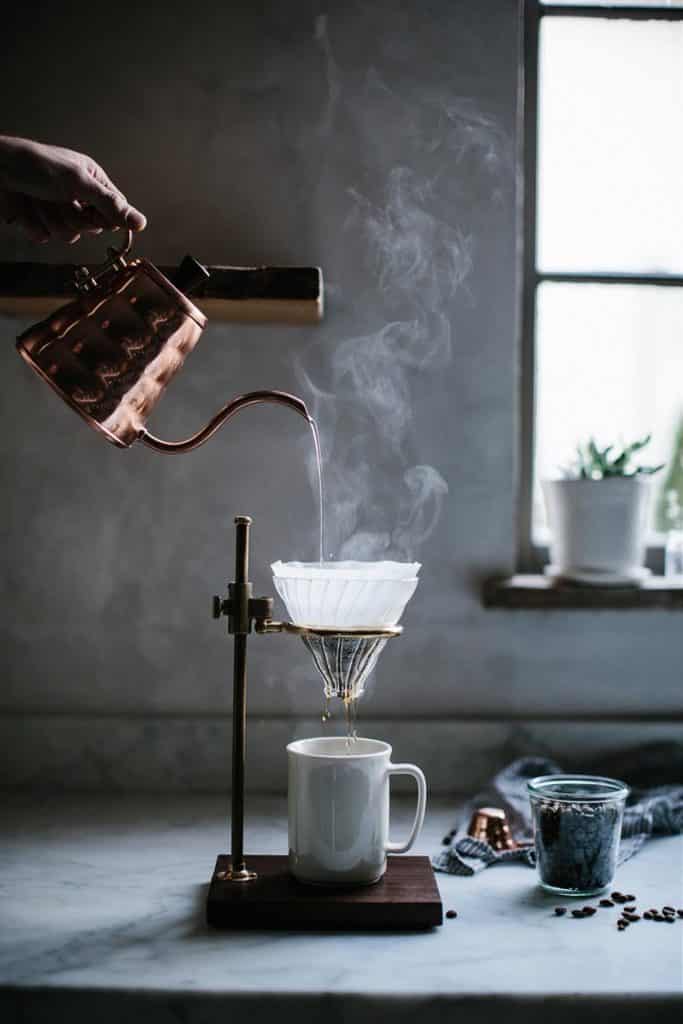
Step 7: Pour #3
The final pour! Using the same spiral-out, spiral-in pattern as Pour #2, add another 200 grams of water (final total: 350 grams) over about 30-45 seconds. As you can tell, striking the right ratio of water to coffee grounds (also known as the “pour over coffee ratio”) is critical to making a good cup of pour over coffee.
Step 8: Wait 2 minutes.
Wait 2 minutes while the coffee filters. Once the flow has slowed to a drip, your coffee is ready!
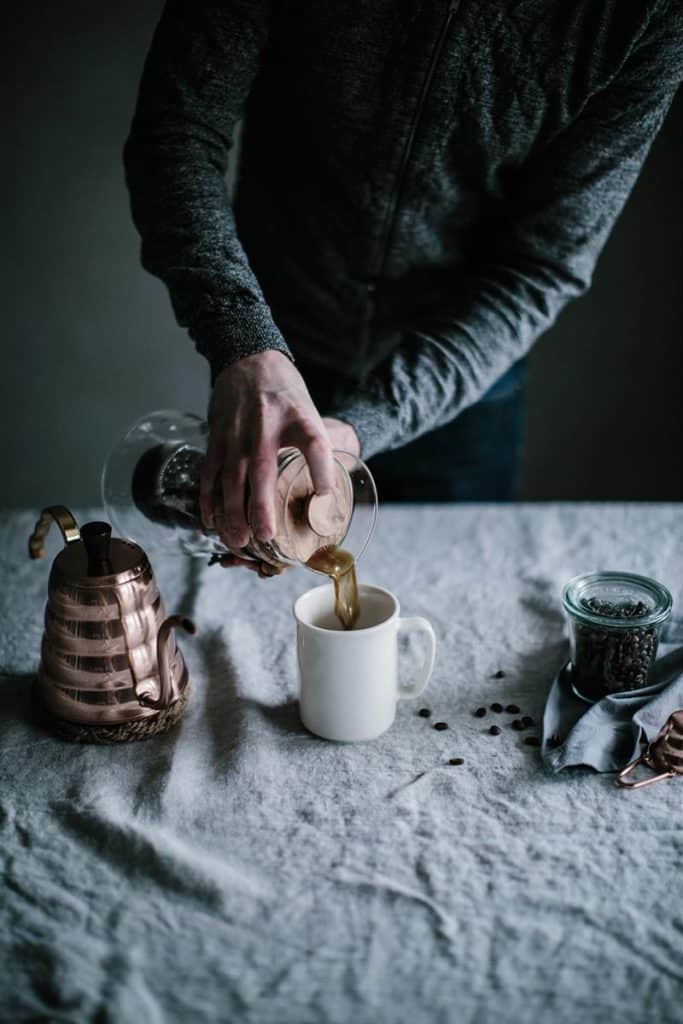
How Does Pour Over Coffee Compare With AeroPress Coffee?
As we show in our breakdown of how to make kopi luwak with an AeroPress, both methods we outline are fairly straightforward. Unlike the pour over, which requires your attention in your pouring method, the amount of time each pour takes and the equipment you use, the AeroPress is much more standardized. The AeroPress is also easier to travel with: with its compact, plastic built, the AeroPress is as portable a coffee setup as you’ll find anywhere.
However, many people believe kopi luwak is best when it’s made via the pour over method. There’s no question that it will take you a few tries to get all of the variables of the pour over just right, but once you do, it’s an extremely tasty way of making kopi luwak.
What’s The Perfect Pour Over Coffee Ratio?
When making your pour over coffee with kopi luwak, you should aim for a ratio of 1:14, or 1 part coffee to 16 parts water. This is why we use 25 grams of kopi luwak beans and 350 grams of water, for a perfect pour over coffee ratio of 1:14.
Top Tips For Making The Best Pour Over Coffee
Tip #1: Use High-Quality Beans
For the best pour over coffee experience, you need to start with high-quality beans. We source our wild kopi luwak directly from the steppes of Java, Indonesia, where we collect it from the dung of wild Asian palm civet cats. All of our beans are medium roasted to ensure a low acid coffee that tastes great and avoids coffee heartburn.
Tip #2: Always Grind One Cup At A Time
This goes for all methods of making coffee, not just pour over, but it’s such an important note that it’s worth stating here anyway. Never grind your beans in advance. It can be tempting to want to grind an entire week’s worth of coffee beans at once to save time, but even on day two or three you’ll notice the quality of your coffee dropping. Think about it: coffee is technically a fruit, just like an apple or banana. Does an apple taste better when you first bite into it, or a week after you slice it?
Of course, fruits taste best when they’re fresh, and coffee is no different, which is why we only sell whole, wild kopi luwak beans that you can grind at home or bring to your local coffee shop to be ground. Pre-ground coffee has been spoiled by air and moisture (just like a week-old sliced apple), resulting in a significantly less tasty cup.
As an Amazon Associate I earn from qualifying purchases.

